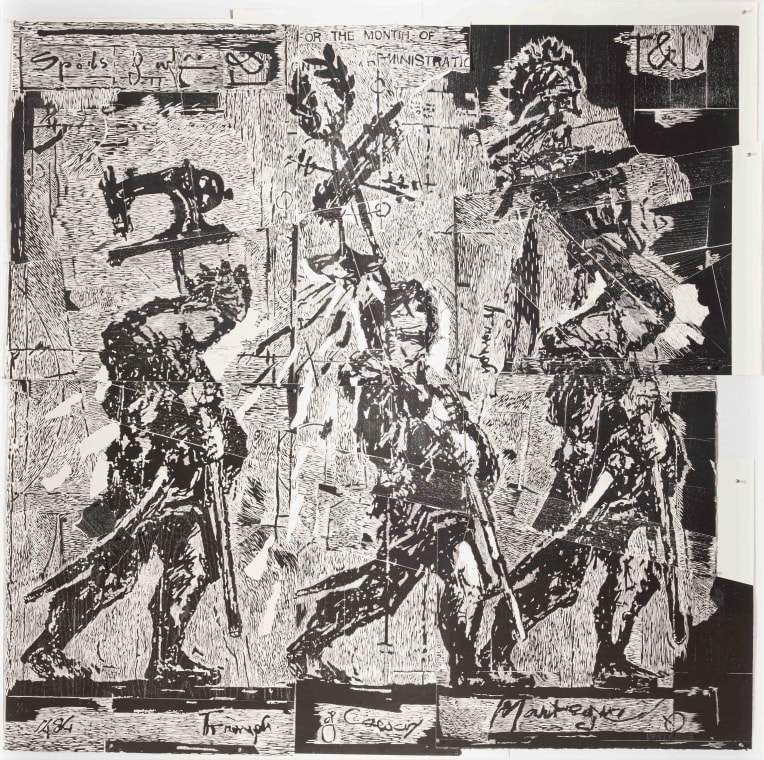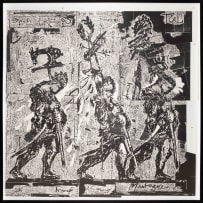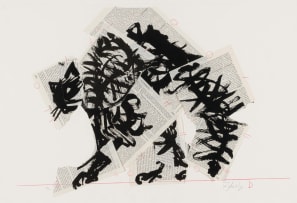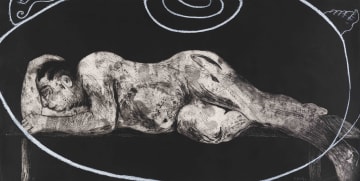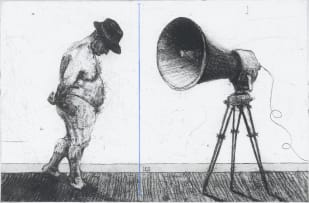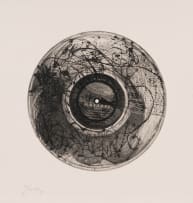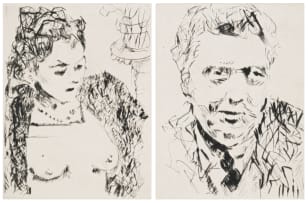William Kentridge
Mantegna
Incl. Buyer's Premium & VAT
About this Item
signed and numbered 1/12
Notes
'In early 2016 William Kentridge was at work on a monumental frieze to be installed along the banks of Rome's Tiber River in April of the same year. The 550-metre work would be stencilled onto the wall of the river from Ponte Sisto to Ponte Mazzini. It would be called Triumphs and Laments and would consist of scenes from the cultural and political history of Rome from drawings that Kentridge had been preparing in his studio in Johannesburg for a number of years. The image chosen for Mantegna is based on a group of nine paintings entitled the Triumphs of Caesar (1484 - 1492) by Andrea Mantegna (1431 - 1506). The sixth panel of the Mantegna series, Corselet Bearers, would form the main point of reference for the first woodcut in the Kentridge series. [It shows a sewing machine, a laurel wreath and a helmet hoisted above the heads of the figures]. The final result makes reference to the reverse graffiti technique used in Triumphs and Laments. In the frieze the erased biological patina from the natural stone wall eventually comes through into the image, and in the print the natural grain of each wood timber is an important part of the work. Many types of wood were chosen for their grain effects as well as their density. Soft woods produced dark sections in printed form and allowed for easier carving, while more heavily[1]grained hard woods allowed for expressive gesture in both the carved mark and the printed sections. An integral design element is found in the angles of both the blocks and the paper as well as in the gestural features of the figures. The woods selected were Panga Panga, Ash, Poplar, and Maple. Panga Panga and Ash are both heavily-grained, dense woods whilst Poplar and Maple are lesser-grained woods. Sections of Ash were used to accentuate gesture in the faces of the figures, dissecting them at angles, whilst Maple and Poplar allowed moments of soft, subtle blacks. Given that the reference images of the frieze along the Tiber River are ten metres high, David Krut Workshop team decided to push the boundaries of the woodcut medium and work as large as possible. Since the printing press would not accommodate this size, it was decided that the print would have to be an assemblage of paper sheets that would fit together like a puzzle.'
David Krut Workshop (2017) William Kentridge, Triumph and Laments Woodcuts: Mantegna, Johannesburg: David Krut, pages 1-6.
Literature
William Kentridge (2019) Why Should I Hesitate: Putting Drawings to Work, Cape Town: Koenig Books, published to accompany the artist's exhibitions at Norval Foundation and Zeitz MOCAA, 24 August 2019 to 23 March 2020, another impression from the edition illustrated on page 312.
Stephen Clingman (2022) William Kentridge: Liberating Vision, London: Royal Academy of Arts, published to accompany the artist's exhibition at Royal Academy of Arts 24 September to 11 December 2022, another impression from the edition illustrated on page 183.
